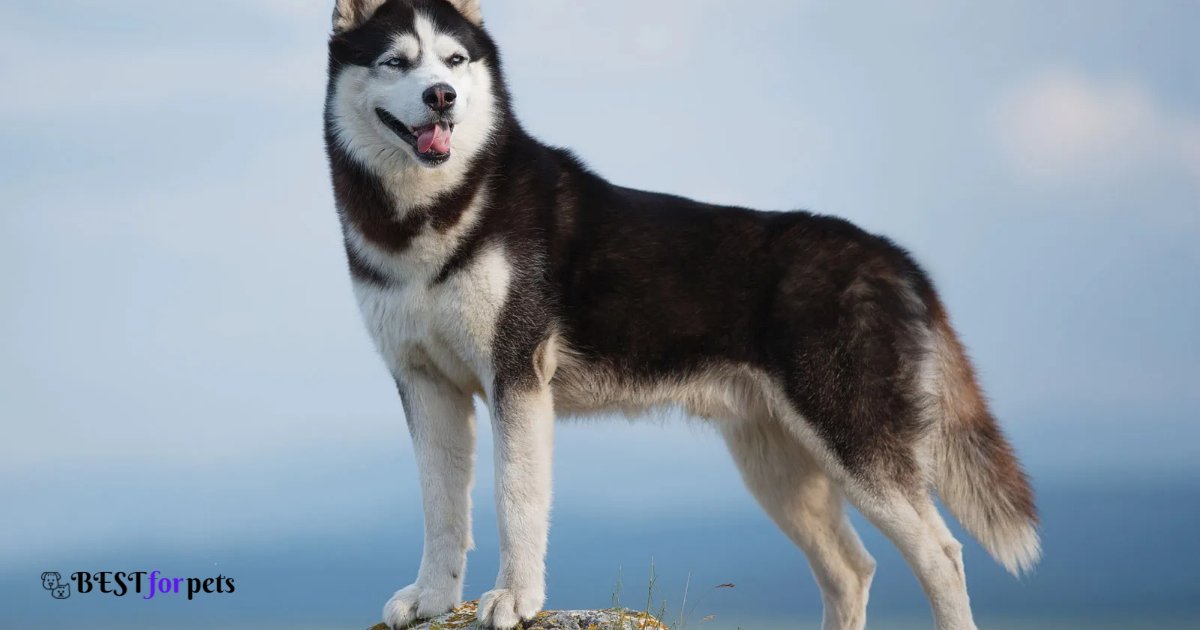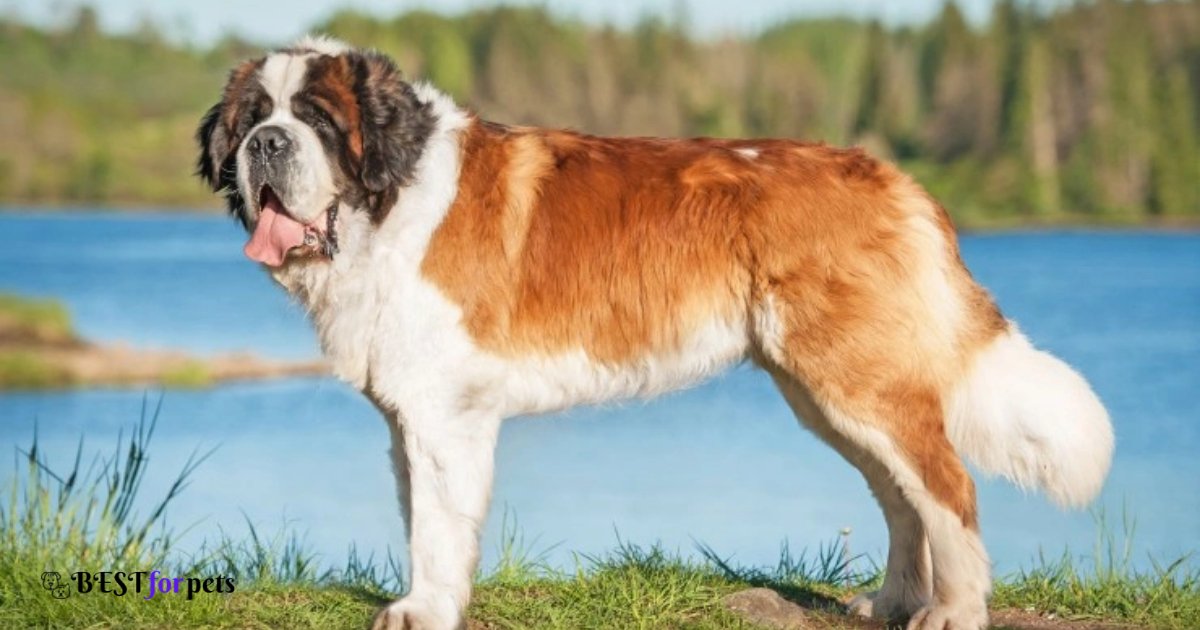Siberian Husky Vs Saint Bernard
Siberian Husky vs Saint Bernard: History and Origins
Siberian Husky: The Siberian Husky has a rich history dating back over 3,000 years. Originating from the Siberian region of Russia, these dogs were bred by the Chukchi people as working dogs to pull sleds in harsh Arctic conditions. Their endurance and resilience in the extreme cold earned them a well-deserved reputation as Arctic adventurers. Huskies played a vital role in the survival of their human companions, and their history is intertwined with the indigenous people of Siberia.
Saint Bernard: The Saint Bernard’s origins are traced to the Swiss Alps, where they were developed by Hospice monks in the late 17th century. These monks bred massive dogs to help locate and rescue travelers lost in the treacherous mountain passes. Over time, the Saint Bernard breed became renowned for their search and rescue abilities. Their history is a testament to their gentle and dependable nature, often serving as saviors in life-threatening situations in the alpine region.
Siberian Husky vs Saint Bernard: Appearance and Characteristics
Siberian Husky: Siberian Huskies are medium-sized dogs with striking features. They typically weigh between 35 to 60 pounds and have a double coat that comes in various colors, including black, gray, red, and pure white.siberian husky One of their most captivating traits is their often blue or multicolored eyes. Huskies are known for their agile and athletic build, designed for endurance and efficiency in pulling sleds through snow and ice.
Saint Bernard: Saint Bernards are true giants among dog breeds. Males typically weigh between 140 to 180 pounds. They have a dense, waterproof coat, typically red with white markings, and a broad head with dark brown eyes that convey their gentle nature. Saint Bernards are massive and solidly built, reflecting their history as powerful rescue dogs bred to navigate treacherous mountain terrain.

Siberian Husky vs Saint Bernard: Temperament
Siberian Husky: Siberian Huskies are known for their friendly and outgoing temperament. They are intelligent but can be independent, making training a bit of a challenge. Huskies are sociable dogs that get along well with other dogs and children. They have an adventurous spirit and require regular exercise and mental stimulation. While they are generally friendly, they can be reserved around strangers, making them good watchdogs.
Saint Bernard: Saint Bernards are famous for their gentle and affectionate temperament. They are excellent family dogs and are particularly patient and protective with children. They have a calm disposition and are known as “gentle giants.” Saints are friendly, easygoing, and sociable, making them wonderful companions for households of all types. They are not particularly territorial and are more likely to greet strangers with a wagging tail than suspicion.

Siberian Husky Vs Saint Bernard: Health
Siberian Husky:
Huskies are generally healthy dogs with a lifespan of around 12 to 14 years. However, they can be prone to certain health issues, including hip dysplasia, eye problems (such as cataracts and progressive retinal atrophy), and skin conditions. Their dense double coat also requires regular grooming to prevent matting and excessive shedding.
Saint Bernard:
Saint Bernards have a shorter lifespan than Huskies, typically living around 8 to 10 years. They are prone to health concerns like hip and elbow dysplasia, heart problems (including dilated cardiomyopathy), and bloat. Their large size makes them susceptible to joint issues as they age. Regular vet check-ups and a balanced diet are essential for maintaining their health.
Siberian Husky Vs Saint Bernard: Trainability
Siberian Husky:
Siberian Huskies are intelligent but can be quite independent, which can make training a challenge for novice owners. They have a strong prey drive and may be prone to wandering off if not properly trained and supervised. Positive reinforcement methods and consistency work best when training a Husky. Early socialization is crucial to help them get along with other dogs and animals. With patience and dedication, they can excel in obedience training and even learn tricks. However, their stubborn streak can require a bit more effort compared to some other breeds.
Saint Bernard:
Saint Bernards are generally more trainable and eager to please compared to Huskies. They have a calm and gentle disposition, making them receptive to training methods that focus on positive reinforcement.
They tend to be obedient and are less likely to exhibit stubborn behavior. Early socialization is also important to ensure their well-rounded behavior, especially considering their large size.
Siberian Husky Vs Saint Bernard: Bark
Siberian Husky:
Huskies are not known for excessive barking. They are typically quiet dogs, which can be a relief for those living in close quarters or residential neighborhoods. However, they are known for their vocal nature when it comes to howling. Huskies often howl in response to various stimuli, like sirens or other dogs’ howls. This unique vocalization is part of their charm but can be surprising to those not familiar with the breed.
Saint Bernard:
Saint Bernards are generally not considered excessive barkers either. They tend to be more reserved in their vocalizations, and their deep bark may only come into play when they sense something unusual or if they are trying to alert their owners. They are not prone to unnecessary or continuous barking, making them a suitable choice for those who prefer a quieter dog.
Siberian Husky Vs Saint Bernard: Adaptability
Siberian Husky:
Huskies thrive in colder climates due to their thick double coat, which provides insulation against harsh weather conditions. They are less adaptable to hot and humid environments, and care should be taken to ensure they don’t overheat. Huskies are also adapted to an active lifestyle and need regular exercise and mental stimulation to prevent boredom and destructive behavior.
Saint Bernard:
Saint Bernards are more adaptable to various climates, including colder regions, thanks to their dense coat. However, their large size can make them more susceptible to heat-related issues, so they should be kept cool in hot weather. They are known for their easygoing nature and can adapt well to both urban and rural settings. Their lower activity level makes them more adaptable to apartment living, but they still need daily exercise to stay healthy and happy.
Siberian Husky Vs Saint Bernard: Nutrition
Siberian Husky:
Huskies have specific dietary needs due to their active nature and susceptibility to certain health issues. High-quality commercial dog food with a balance of proteins, fats, and carbohydrates is essential. They may have a tendency to overeat, so portion control is crucial to prevent obesity. Be sure to provide fresh water at all times, especially in warmer climates, to keep them hydrated.
Saint Bernard:
Saint Bernards require a balanced diet that accounts for their large size. They are prone to hip and joint issues, so a diet formulated for large breeds with appropriate levels of calcium and phosphorus is recommended. Due to their potential for weight gain, it’s essential to monitor their food intake and provide regular exercise to prevent obesity. Fresh water should always be available to keep them hydrated, especially during exercise and in warm weather.
Frequently Asked Questions
Which breed is more suitable for families with children?
Both Siberian Huskies and Saint Bernards can be excellent choices for families with children. Saint Bernards are often considered particularly gentle and patient with kids due to their calm demeanor. Huskies are also good family dogs but may require more supervision around young children due to their higher energy levels and potential for independent behavior. Socialization and training from a young age are key factors in ensuring that either breed interacts well with children.
Are Siberian Huskies and Saint Bernards good with other pets?
Huskies tend to have a higher prey drive and may not be the best choice if you have small pets like rabbits or guinea pigs. Saint Bernards are generally more accommodating with other pets, but early socialization is still crucial. Proper introductions and supervision are necessary when introducing any new pet to your household, regardless of the breed.
Do Siberian Huskies or Saint Bernards require more grooming?
Siberian Huskies and Saint Bernards both have thick double coats, but Huskies tend to shed more profusely and require more frequent brushing, especially during shedding seasons. Saint Bernards also shed but to a lesser extent. Regular grooming is essential for both breeds to keep their coats healthy and free of mats.
Which breed is more suited to apartment living?
Saint Bernards are generally more adaptable to apartment living due to their calm and easygoing nature. However, it’s essential to ensure they still receive daily exercise to prevent weight gain and keep them healthy. Huskies may adapt to apartment living but require more exercise and mental stimulation due to their high energy levels.
Which breed is more trainable?
Saint Bernards are often considered easier to train due to their gentle and obedient nature. Huskies can be more independent and may require more patience and consistency in training. Positive reinforcement methods work well for both breeds, but it’s essential to tailor training to their specific characteristics and needs.

